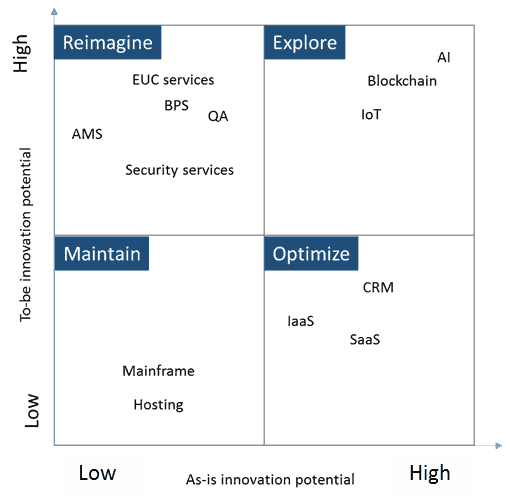August 29, 2017
Until a year or so ago, the common refrain among those operating in the HR function was that HR services were already so heavy with platform automation that there wasn’t much that Robotic Process Automation (RPA) or Artificial Intelligence, its more advanced cousin, could do.
However, my extensive research shows that HR has enthusiastically jumped on the bandwagon. Even though many automation projects still inhabit the realm of slideware, many HR leaders and their service provider brethren are recognizing the impacts that automation can have on both their costs and revenue.
Enterprises: cost impact
Even though Human Resource services are heavy with platform automation (these platforms can be the traditional ones such as SAP and PeopleSoft or the new-age ones such as Workday and SuccessFactors), humans continue to do transactional tasks, such as entering data into platforms, transferring data between platforms, or preparing templated documents such as offer letters. RPA can perform these types of tasks faster and more accurately, and leave a reliable audit trail, wherever needed. It also frees people to do higher-order work. The result is significantly better efficiency and reduced costs.
Enterprises: revenue impact
Automation can also boost revenue indirectly by enhancing the employee experience, which in turn increases productivity. Think chatbots. While the current chatbot implementations are mostly RPAs, infusion of AI features such as Natural Language Processing (NLP), machine learning, and conversational user interfaces can be game changing. For instance, AI-enabled chatbots could remove employees’ toil from applying for leaves, filing expense reports or timesheets, selecting benefit plans, or getting answers to common HR queries. Managers could use chatbots to help shortlisted candidates, provide personalized onboarding assistance, and collect performance evaluation feedback. Chatbots’ 24/7 availability, ease of use, and rapid and accurate responses contribute directly to better productivity and experience.
HR service providers: cost impact
Service providers too are gaining significant cost and efficiency benefits through RPA, which mainly translates to deploying less Full-Time Employees (FTEs) to deliver the same outputs. Providers are presently grabbing most of these cost benefits to expand their margins, rather than pass them on to their clients in the form of reduced prices. That approach works like a charm for providers because the dominant output-based pricing model (per employee served, per pay slip processed, etc.) of HR services delinks FTE count from pricing, thus hiding gains through FTE reduction from clients. That is unlike the case of say, an F&A services construct, where the pricing is usually input-based (per FTE) and enterprise customers pressure providers to reduce FTE count through RPA and thus, cut prices.
HR service providers: revenue impact
However, enterprises are steadily wising up to RPA benefits that can drive lower price. Moreover, with increasing competition, providers are increasingly using RPA to set ever lower prices. Thus, providers will soon be forced to make a choice – do nothing and let others take away their business, or aggressively deploy RPA and cannibalize themselves but retain clients. The latter is obviously the lesser evil, even though revenues will be adversely impacted. That is when providers that look beyond RPA and invest in AI-based automation will trump the market. AI-based automation can provide benefits, such as enhanced employee productivity, for which enterprises will be willing to pay a premium. Powerful AI-based automation can also help providers deliver services they were earlier incapable of delivering, such as cognitive analytics. That can expand revenues and counter the cannibalization effect of RPA.
Clearly, automation is steadily becoming an imperative for both enterprises and HR services providers.
However, as with any advanced technology, enthusiasm without a generous helping of caution can be a dangerous potion. Setting realistic expectations about the benefits of automation, investing in technological and cultural change management, and bringing on-board key stakeholders are a few keys to success for enterprises and service providers in the long journey that is an automation implementation.
Keep your eyes peeled for my drill-down blog on these, and other, keys to success! In the meantime, feel free to share your opinions and stories of automation in HR – why or why not go for it, what works and what doesn’t, etc., directly with me at [email protected].

